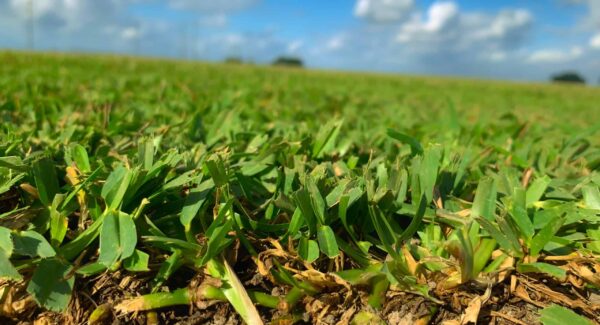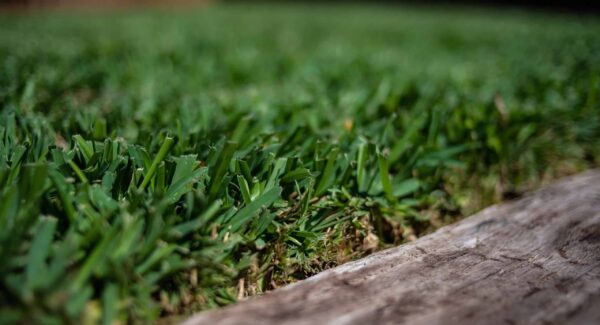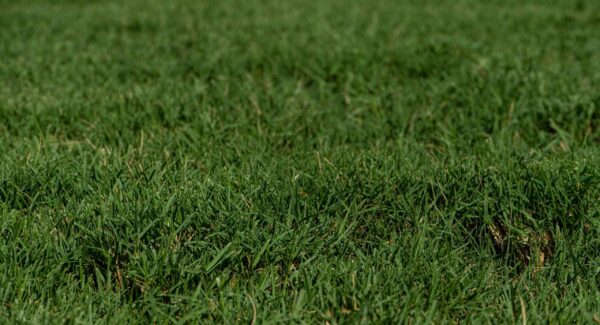St. Augustine Grass
St. Augustine grass, scientifically known as Stenotaphrum secundatum, is a popular lawn choice, especially in the Austin and San Antonio areas. This warm season grass, recognized for its thick grass blades that emanate an emerald-green color, has been adapted specifically for the climate conditions of these Texan cities. It boasts commendable shade tolerance, a trait setting it apart from Bermuda grass and Buffalo grass.
St. Augustine Grass Varieties Comparison Table for Austin and San Antonio
| Category | Texas Native St. Augustine | Palmetto St. Augustine | Raleigh St. Augustine |
|---|---|---|---|
| Climate Tolerance | High (heat), Low (cold) | High (heat), Low (cold) | High (heat), Low (cold) |
| Shade Tolerance | Moderate to High | High | Moderate |
| Drought Resistance | Moderate | High | Moderate |
| Mow Height | 2 - 3 inches | 2 - 3 inches | 2 - 3 inches |
| Mow Frequency | Once a Week | Once a Week | Once a Week |
| Disease Resistance | Moderate | Moderate | Low |
| Texture and Color | Coarse, Dark Green | Vivid Emerald Green | Coarse, Dark Green |
| Growth Rate and Density | Fast, High Density | Moderate, High Density | Moderate, High Density |
| Watering Needs | Moderate to High | Moderate | Moderate to High |
| Soil Preference | Adaptable, Prefers Slightly Acidic | Adaptable, Prefers Slightly Acidic | Adaptable, Prefers Slightly Acidic |
| Fall Color Retention | Moderate | Moderate | Low to Moderate |
| Spring Green Up | Moderate to Fast | Moderate to Fast | Moderate |
Notes for Austin and San Antonio:
- Climate Tolerance: All three varieties are well-suited for the hot climate of Austin and San Antonio, though they will lose color when temperatures drop. Low cold tolerance might indicate they won’t survive, but they will; they lose their color in colder temps.
- Shade Tolerance: Palmetto St. Augustine shows the highest shade tolerance, making it a good choice for lawns with more shade, though no grass will grow in extremely dense shade with little to no sunlight.
- Drought Resistance: Palmetto St. Augustine has the highest drought resistance, an important factor considering the occasional drought conditions in these areas.
- Maintenance: All varieties require regular mowing during the growing season and have moderate to high watering needs, consistent with the region’s climate. Ensuring your mower blades are sharpened before each mowing will greatly reduce diseases, especially during the spring & fall.
- Best Use: These varieties are well-suited for residential lawns in Austin and San Antonio, especially in areas that receive a mix of sun and shade. Palmetto might be preferred for its better shade and drought tolerance.
This tailored comparison should help Austin and San Antonio clients choose the most suitable St. Augustine grass variety for their specific lawn conditions and preferences.
Botanical Overview
- Scientific Name: Stenotaphrum secundatum
- Popularly Known As: Buffalo grass, Charleston grass, couch grass
- Belongs To: Poaceae family
- Growth Nature: Stoloniferous Warm-season Grass
- Grows Best In: USDA Zones 7 – 12
- Light Needs: Thrives in both sunlit and partially shaded areas
- Preferred Soil: Prioritizes good drainage
- Soil pH: Adaptable, ranging from acidic to alkaline
- Origins: Found across continents, from the United States and the Caribbean to parts of Africa and Asia
Distinct Features
- Texture: Defined by its sturdy feel, attributed to its broad grass blades.
- Growth Pattern: Notable for its dense spread, achieved via stolons.
- Resilience in Dry Periods: Although it appreciates regular watering, St. Augustine isn’t overly demanding in its water needs, even during drier times.
- Tolerance to Shade: Recognized for its ability to prosper even in less sunlit areas.
- Blade Description: Features broad and flat grass blades, adding to its full appearance.
- Quick to Take Root: St. Augustine is favored for its speed in establishing itself post-planting.
- Pest Challenges: It’s notably susceptible to the likes of chinch bugs.
- Optimal Growth Season: Primarily flourishes in warmer climates, with some cold resistance.
Lawn Care Essentials in Central Texas
With Texas’ warm and sometimes drought-prone atmosphere, drought tolerance is crucial. As such, water distribution should be methodical, grass lawn mowing must be executed while maintaining the ideal height, and fertilizer suggestions usually consider the unique soil types in Texas. Furthermore, any yard, even one spanning 1 square foot, might face an onslaught from weeds native to Central Texas, underlining the need for effective weed control initiatives.
Challenges and Solutions
The Texas terrain throws its challenges, e.g., pest control issues arising from chinch bugs. But homeowners can nurture a lawn successfully with attentive care during the spring-summer period and an informed selection of the St. Augustine grass variety. Whether the aim is to greenify a 1-square yard or a sprawling estate, a profound grasp of St. Augustine’s features and unwavering maintenance is the key.
Comparing Texas Favorites: St. Augustine vs. Bermuda vs. Zoysia
Bermuda, celebrated for its vigorous growth and outstanding drought tolerance, is the go-to for high-footfall areas. Its fine grass blades impart a refined look, but it’s sturdy. In contrast, Zoysia promises a dense cover resembling a carpet and outshines Bermuda in shade tolerance. Nonetheless, St. Augustine captures attention with its expansive grass blades, rapid growth rate, and signature emerald-green tint it bestows upon a lawn.
Weighing the pros and cons of these grasses, many in Austin and San Antonio gravitate towards St. Augustine due to its unmatched performance in the state’s unique weather and soil. Ultimately, the selection narrows down to personal tastes, the lawn’s specific needs, and challenges posed by its geographical and functional context.








